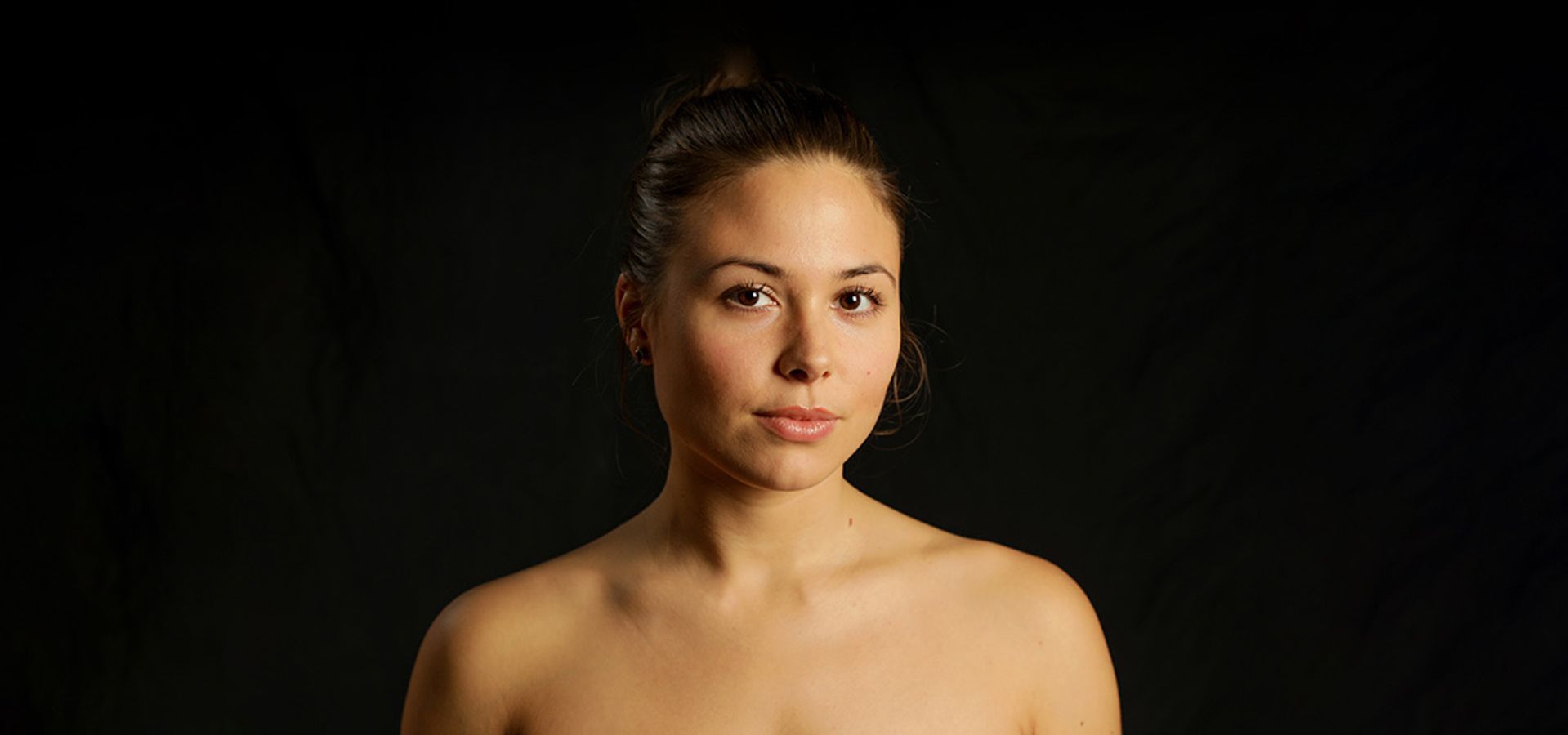A conversation with Daina Ashbee
Dance Magazine called Daina Ashbee an international talent to watch, and in recent years she has been a welcome regular at KVS. Following Pour and Laborious Song, she now presents her latest piece J'ai pleuré avec les chiens, co-produced by Festival TransAmériques, KVS and others.

You describe your work as dark. Why do you focus on conditions such as suffering and violence?
That has to do with my personal history. My dance improvisation has always had a cathartic and violent aspect to it. I didn’t realise or understand that until I stopped dancing. When I started directing I was able to step outside and see what I was manifesting. From that point onward, all my pieces started dealing with the objectification of women and traumatic events. At the beginning of my career I was anxious and depressed, but I managed to put it into work and find a place for it to be expressed. Creating became in that sense a healing process for me.
How does your work come to realisation?
I can never plan the outcome of my working process, I just let the magic happen. I usually start with meditation and writing as my main research. I go inside my body and try to understand what comes up in my pelvis spiritually, somatically, subconsciously. Then through a process of writing I can piece those feelings together and literally create a form. That form becomes abstract again through the creation of dance.
A lot of my materials are based on the balance of the body and on moving through points of weakness and struggle as a kind of physical exercise. That shapes the language of the body into for example trembling and shaking. A whole other body language emerges from that practice of finding places that are unstable, more risky and slippery. In trying to get up and finding the balance of different positions one can become more and more powerful. That is the evolution of gaining strength and transforming from something difficult to something much easier.
Using your body is a way to communicate and keep ourselves connected. We all have different bodies with feelings and sensations that are unique, but at the same time we can relate to each other as humans.
Nudity takes a central position in your work. How do you relate to the naked body as a way to communicate?
I believe in the power of listening to the body as a tool for healing. The easiest way to create a place of listening and understanding is by bringing the body to its natural state. That is the reason why I work with nudity. But unfortunately, the body is not a language that many people practice or use as a manner to express themselves with.
It is a blessing to be connected to your body and to understand how your body works. Only very few of us have the knowledge or the capacity and the luxury to spend time with their bodies. But it still is important, using your body is a way to communicate and keep ourselves connected. We all have different bodies with feelings and sensations that are unique, but at the same time we can relate to each other as humans.
J’ai pleuré avec les chiens will be your first group piece. What is your ambition with this show?
Laborious Song was my first solo for a man, and before I made several duets and solos for women. For this production there will be five female bodies of different ages on stage. I’ll be working with women that are younger and a lot older than me, whereas in the past I have always worked with people of a similar age to mine.
So this piece really speaks about the community of women, as individuals and as a collective. Even though a story comes from a personal history, there is no individual beginning, middle and end. That is also the case in my work. There is definitely the individual struggle each of us deals with, and by bringing people together the individual gets stronger. I see this piece as the end of an era, a cumulation of all my previous works on suffering. I will challenge myself to be true to that personal and internal darkness and to again transform repetition and energy through dance and time.
By bringing people together the individual gets stronger.
You will not only work with female performers but also with an all-female crew. Was that a well-considered choice?
Indeed, my lighting and sound designer as well as my tour manager are women. I could say that choice happened purposefully and naturally at the same time. I wanted to work with new collaborators and these women came on my path. They felt important to me, but I also had the need to work with people whom I would like to spend time with. Through the process I hope we can become engaged as a family or a community.
The title J’ai pleuré avec les chiens has a poetic edge to it. What does it refer to?
The title is very true to who I am. First of all, I have a deep connection to animals and particularly to dogs, it is something spiritual that exists outside of me. The title came up three years ago when I was staying with a befriended writer from Quebec. I was touring a lot and I didn’t really have anywhere to come home to, but her house was finally a place where I could land. One day I spent the entire day crying at home with the dogs. When she asked me what I had been doing I said: ‘J’ai pleuré avec les chiens.’ She thought it was a beautiful expression and it stayed in the back of my head. It felt like it was meant to be.




